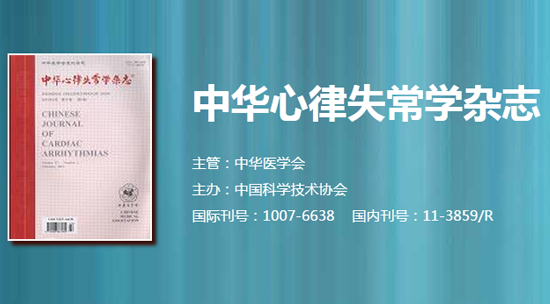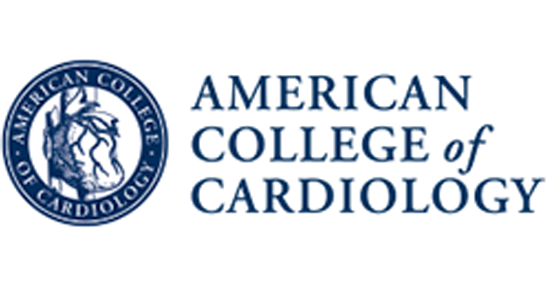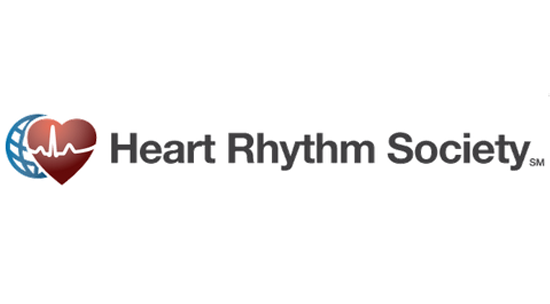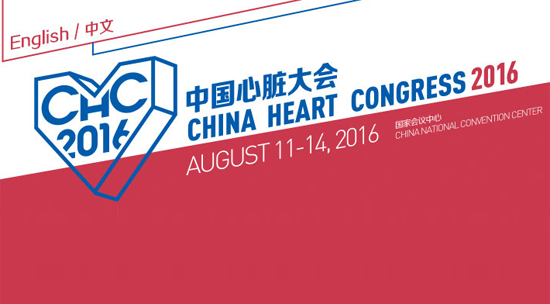HeartRhythm主编—陈鹏生教授语音速递(三月刊 英文版)
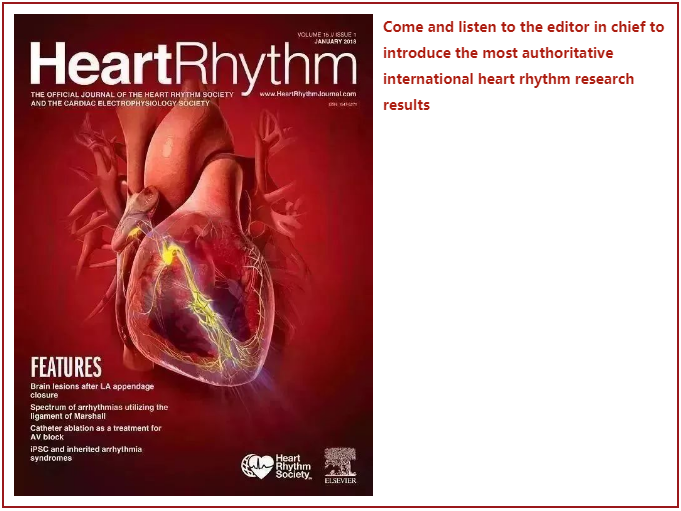

Peng-Sheng Chen
Hello, this is Dr. Peng-Sheng Chen, the Editor-in-Chief of Heart Rhythm.
The first article of the March 2023 issue is titled “effects of pulsed-field ablation on the autonomic nervous system in paroxysmal atrial fibrillation: A pilot study”. Acute electrical isolation was achieved in 100% of pulmonary veins in the 18 patients. Serum nerve injury biomarkers did not show any changes preablation and immediately postablation and 24 hours after ablation. Preablation and 30-day postablation heart rate variability did not differ. Postablation diffusion-weighted imaging revealed no acute cerebral microembolus events. Moreover, there were no other procedure-related complications. The 8-month Kaplan-Meier estimate of freedom from arrhythmia was 83% ± 9%. The authors conclude that PFA does not induce nerve injury during pulmonary vein isolation for paroxysmal AF.
The next paper is “Ultra-microbiological study of nonthermal irreversible electroporation on the esophagus”. The parameter combination of 2000 V/cm multiplied by 90-pulse output was directly applied to the esophagus in 60 New Zealand rabbits. The procedure predominantly triggered apoptosis of esophageal cells shortly after electroporation. Since the tissue structural framework was preserved, esophageal cells could regenerate through self-replication within 4 weeks. A complete anatomical repair can eventually be achieved through structural remodeling, and no lumen stenosis, ulcer, or fistula was observed in the ablated segment. The authors conclude that monophasic, bipolar nonthermal irreversible electroporation pulses delivered using plate electrodes in an esophageal model demonstrate no irreversible ultra-micropathological changes to the esophagus after 4 weeks.
Up next is “Electrocardiographic P terminal force in lead V1, its components, and the association with stroke and atrial fibrillation or flutter”. The ECG marker P terminal force V1 (PTFV1) ≥4 mV·ms was considered abnormal. Patients with abnormal PTFV1 were stratified into tertiles based on duration and amplitude values. Of 267,636 patients, 5803 had AF and 18,176 had stroke/TIA (follow-up 6.5 years). Abnormal PTFV1 was present in 44,549 subjects (16.7%) and was associated with an increased risk of AF and stroke/TIA. The authors conclude that abnormal PTFV1 was associated with an increased risk of AF and stroke/TIA. Increasing P terminal force V1 duration showed a dose-response relationship with the development of AF and stroke/TIA.
Coming up is “Increased risk of incident atrial fibrillation in young adults with mental disorders: a nationwide population-based study”. The authors identified adults aged 20-39 years without a history of AF and who have been diagnosed with mental disorders using the Korean National Health Insurance Database between 2009 and 2012. A total of 6,576,582 subjects were included. Among the total population, 10% had mental disorders. During the follow-up period, 8932 incident AF events occurred. Patients with mental disorders showed a higher AF incidence than did those without. The authors conclude that young adults diagnosed with mental disorders have a higher risk of incident AF.
That article is followed by one titled “Epicardial Ablation of Refractory Focal Atrial Tachycardia After a Failed Endocardial Approach”. Among 186 consecutive patients undergoing ablation for 198 focal ATs, epicardial mapping and ablation via a percutaneous subxiphoid approach were attempted in 10 patients because of failed endocardial ablation. All fast ATs were successfully eliminated by ablation at the epicardial earliest activation site. The authors conclude that epicardial mapping and ablation can be considered as an effective and safe option for fast AT resistant to endocardial ablation.
The next one is “The Association of Interventricular Activation Delay with Clinical Outcomes in Cardiac Resynchronization Therapy”. The purpose of this study was to assess the association between interventricular delay and clinical outcomes in CRT patients implanted with quadripolar left ventricular (LV) leads. A total of 581 patients had complete RV-LV delay data. Predictors of long RV-LV delay included female sex, left bundle branch block, and QRS duration >150 ms. Survival free of the primary outcome at 18-month follow-up was 87% in the long activation delay group compared with 77% in the short delay group. The authors conclude that among CRT patients with quadripolar LV pacing leads, longer baseline interventricular activation delay was significantly associated with the composite endpoint of all-cause mortality and heart failure hospitalization.
Coming up is “Outcomes of leadless pacemaker implantation following transvenous lead extraction in high-volume referral centers: Real-world data from a large international registry”. Of the 1179 patients enrolled, 15.6% underwent a previous transvenous lead extraction. During a median FU of 33 months, pacemaker-related major complications and all-cause mortality did not differ between the extraction groups and the de novo implantation group. Pacing threshold was higher in the transvenous lead extraction group at implantation and during FU, with very high pacing threshold patients being more represented than in the de novo implantation group. The authors conclude that leadless pacemakers showed a satisfactory safety and efficacy profile after transvenous lead extraction. Better electrical parameters were obtained when leadless pacemakers were implanted at a different RV location than the one where the previous transvenous RV lead was extracted.
The next paper is “A Comparison of Data Quality and Monitoring Completion Rates Between Clinic and Self-Applied ECG Patches”. Since the onset of the COVID-19 pandemic, the use of direct-to-patient, self-applied ECG patch has substantially increased. Among the 29,093 ECG patch prescriptions, the COVID self-applied group had a lower return rate than did clinic-applied groups. The COVID self-applied group demonstrated a lower mean percentage of analyzable time than did clinic-applied groups. The authors conclude that self-applied ECG patches were returned at a lower rate and had a statistically lower percentage of analyzable time than clinic-applied patches. However, there were no differences in wear time and in analyzable time between groups.
Up next is “A Panel of Blood Biomarkers Unique to Sudden Cardiac Arrest”. The purpose of this study was to identify biomarkers of SCA obtained close to the SCA event. Twenty cases (survivors of SCA) and 40 age- and sex-matched controls were compared, with a replication analysis of 29 cases matched to 57 controls. Patients had a mean age of 58 years. A total of 20 biomarkers differentiated SCA from CAD. The top identified biological processes involved the extracellular matrix, coagulation cascades, and platelet activation. The authors identified a panel of novel blood biomarkers specifically associated with SCA. These biomarkers could have mechanistic significance and potentially enhance the clinical prediction of SCA.
Coming up is “Timing of ICD implantation in patients with cardiac laminopathies - external validation of the LMNA-risk ventricular tachyarrhythmia calculator”. The authors included 118 patients with non-missense LMNA variants. Twenty-three patients (19%) experienced VTA during 6.1 years follow-up. Atrioventricular block and reduced left ventricular ejection fraction were independent predictors of VTAs, while nonsustained ventricular tachycardia, male sex, and non-missense LMNA variants were not. The LMNA-risk VTA calculator showed 83% sensitivity and 26% specificity for identifying patients with VTAs during the coming 5 years. The calculator overestimated arrhythmic risk in patients with mild and moderate phenotype, particularly in men. The authors conclude that validation of the LMNA-risk VTA calculator showed a high sensitivity for subsequent VTAs. Frequent reevaluation of risk was necessary to maintain the sensitivity of the model.
Up next is “High-resolution mapping of reentrant atrial tachycardias: relevance of low bipolar voltage”. The purpose of this study was to evaluate the diagnostic performance of voltage thresholds for identifying regions of slow conduction during reentrant atrial tachycardias (ATs). Thirty bipolar voltage and activation maps created during reentrant ATs were analyzed. They found that voltage and CV were moderately correlated. Bipolar voltage predicted regions of slow conduction with an area under the receiver operating characteristic curve of 0.733. A threshold of 0.50 mV had 91% sensitivity and 35% specificity for identifying slow conduction. The authors conclude that widely used bipolar voltage amplitude thresholds to define "abnormal" and "scar" tissue in the atria are, respectively, sensitive and specific for identifying regions of slow conduction during reentrant ATs. However, overall, the association of voltage with CV is modest. No clinical predictors of AT circuit dimensions were identified.
The next one is “Alert-driven versus scheduled remote monitoring of implantable cardiac defibrillators: A Cost-Consequence Analysis from the TRUST Trial”. The authors constructed a decision-analytic Markov model to estimate the costs and benefits of the 3 strategies over a 2-year time horizon from the perspective of the US Medicare payer. Mean cumulative follow-up costs per patient were $12,688 in the in-person evaluation group, $12,001 in the remote patient monitoring-conventional group, and $11,011 in the remote patient monitoring-alert group. The authors conclude that alert-driven remote patient monitoring was economically attractive and, if patient outcomes and safety are comparable to those of conventional RPM, may be the preferred strategy for ICD follow-up.
The next article is a contemporary review titled “Pharmacological Prevention of Recurrent Vasovagal Syncope: A Systematic Review and Network Meta-Analysis of Randomized Controlled Trials”. The authors concluded that midodrine was the only agent shown to reduce spontaneous syncopal events. Fluoxetine also seems beneficial but should be studied further in randomized clinical trials. This network meta-analysis did not find evidence of the efficacy of any other medication.
That review is followed by a Creative Concept paper titled “Wave Tail Mapping to Guide Ablation Therapy for Ventricular Arrhythmias”. The authors propose that ventricular repolarization assessment by mapping has a major potential adjunct role in determining critical and vulnerable VT sites and provides the impetus to develop wave tail mapping.
This issue of the journal also has two Research Letters. The first is titled “Alert Notifications during Automatic Wireless Remote Monitoring of ICDs: Load, Characteristics and Clinical Utility”. The authors present an alert suite that generates minimal volume but with high clinical actionability while preserving patient safety. This guidance to device clinics is especially important when remote management is applied for alert-based follow-up. The second one is titled “Feasibility of unshielded portable magnetocardiography: insights from the MAGNETO-SCD trial”. The authors report that unshielded magnetocardiography is feasible in real-world hospital settings. These findings provide a breakthrough in the widespread implementation of magnetocardiography in clinical practice.
We have an In Memoriam for Dr. Frank Marcus, a pioneer in cardiac electrophysiology. His many contributions to the field of cardiac electrophysiology will forever be remembered.
I hope you enjoyed this podcast. For Heart Rhythm, I’m the Editor-In-Chief, Dr. Peng-Sheng Chen.
